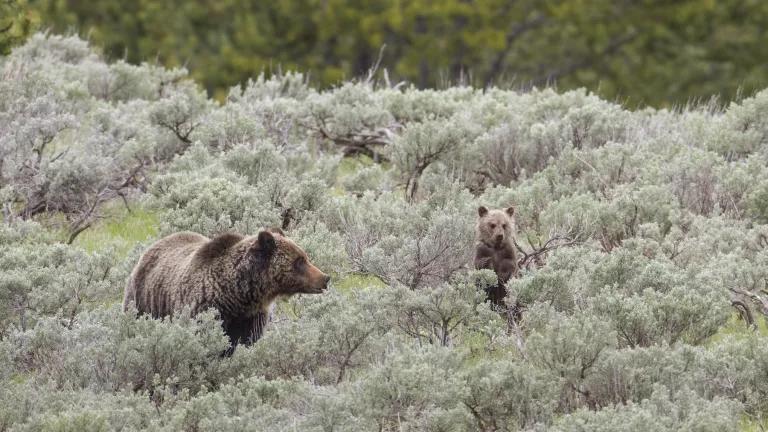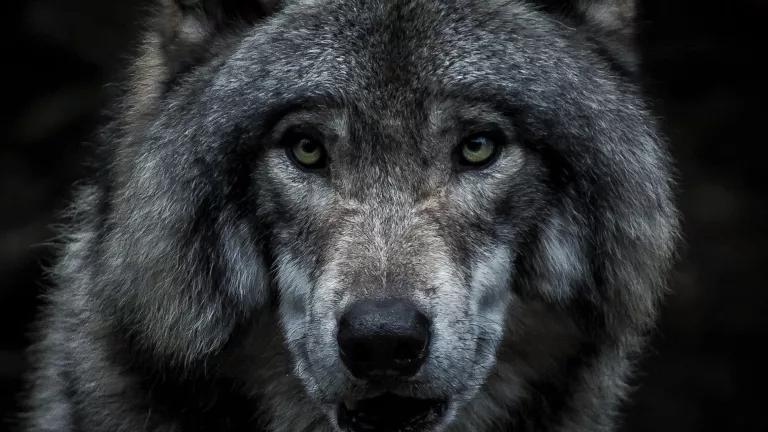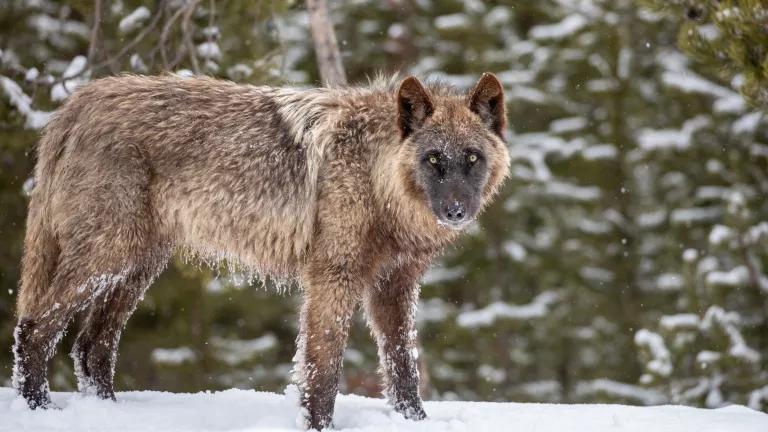
A young grizzly bear walks a ridgeline in northern Montana.
Photo: Glacier NPS
The Bitterroot Ecosystem contains vast, rugged, contiguous blocks of wild lands, including the Selway-Bitterroot, Frank Church-River of No Return and Gospel Hump Wilderness Areas. This region is rich in high-quality habitat, where wild animals of many types and sizes have made a home. This summer, they gained a new neighbor. For the first time since the 1930s, a grizzly bear is successfully navigating his way through the Bitterroot Ecosystem—an area designated as a key recovery zone under the U.S. Fish and Wildlife Service’s Grizzly Bear Recovery Plan.
The presence of this bear marks an important step in grizzly bear conservation: the Bitterroot has the potential to support hundreds of grizzlies and could significantly contribute to the long-term survival and resilience of these bears, who were once abundant in the area prior to being killed off by hunters, trappers and settlers in the early 1900s. The three-year old grizzly bear wandering his way through the Bitterroot today is not the first to reach the recovery area, but he is the first verified bear to stay alive (for now). In 2007, a hunter illegally shot and killed a grizzly bear that was drawn to a black bear baiting site just north of the Selway-Bitterroot Wilderness. On a few other rare occasions, grizzly bears have been spotted just east of the Bitterroot recovery area, including one bear that was trapped and relocated from a golf course near Stevensville, Montana.
Unfortunately, the bears that make their way to the Bitterroot today are still not safe from the top predator of the ecosystem—humans. Perhaps the grizzly bear documented in the recovery area this summer is holding ground because he has reportedly been working hard to avoid areas where people tend to be.
The bear, who is wearing a satellite tracking collar, has determinedly made his way south through the Selway-Bitterroot Wilderness Area, even after being previously released into the Cabinet Mountains of Montana, then later captured at a black bear baiting site in Idaho and relocated to Montana again in 2018. The Interagency Grizzly Bear Committee describes the Bitterroot as having the best potential for grizzly bear recovery of all the remaining unoccupied grizzly bear habitat in the lower-48 states. The killing and relocating of bears who move to the area is a blatant barrier to grizzly bear recovery goals.

A 2018 map depicts the six key grizzly bear recovery areas, with the Bitterroot highlighted in yellow.
Map: USFWS
What will it take for this bear, and future bears, to remain safe inside the Bitterroot? The travelling bear seems to be avoiding humans for now, but humans can do their part too, to avoid conflicts that can lead to the unnecessary killing of bears. We could ban bear baiting; educate hunters, campers and other recreational users about being bear safe; improve roadway crossings for wildlife; and ensure proactive tools are put into place to prevent conflicts between grizzly bears and livestock or other attractants. Both humans and bears can ultimately benefit from these measures. If we act now—proactively—perhaps future news articles will not be reporting on the death of the determined grizzly bear who tried to make the Bitterroot his home.



